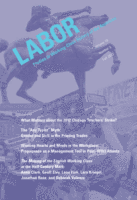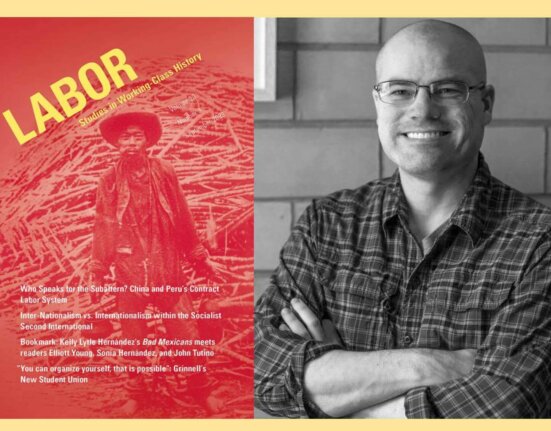In This Issue
The Common Verse
- Robin Clarke, “Untitled (The Mine Collapsed Under)“
LAWCHA Watch
- Rosemary Feurer, “LAWCHA and the Lesson Plan“
Contemporary Affairs
- Tom Alter, ““It Felt Like Community”: Social Movement Unionism and the Chicago Teachers Union Strike of 2012”
In this article Tom Alter analyzes the Chicago Teachers Union Strike of September 2012. He views the strike as a return to social movement unionism reminiscent of the unionism developed during the 1930s and argues that for today’s labor movement to survive it must return to such social movement unionism, leaving behind the business union model that has guided the labor movement in the United States since the 1950s.
Bookmark
- Eric Arnesen, “E. P. Thompson’s The Making of the English Working Class: Assessments after a Half Century”
This issue’s Bookmark section revisits E. P. Thompson’s path-breaking The Making of the English Working Class upon its fiftieth anniversary. Their commentaries, introduced by Eric Arnesen, signal a variety of appreciations and critical reevaluations of the original text and, by extension, reflect the current state of history and politics.
- Lara Kriegel, “How It Feels to Be Fifty: E. P. Thompson and Cultural History, Past, Present, and Future“
- Geoff Eley, “Working-Class Agency: Past and Present“
- Anna Clark, “E. P. Thompson and Domestic Service“
- Jonathan Rose, “On Reading (Eventually) The Making of the English Working Class“
- Deborah Valenze, “E. P. Thompson and the Curricular Turn“
- Leon Fink, “Ten Theses on The Making“
Articles
- Stephen Robertson, “The Company’s Voice in the Workplace: Labor Spies, Propaganda, and Personnel Management, 1918 – 1920”
During World War I, a new form of labor spying developed in addition to spying on unions and strikers and doing “efficiency work,” namely, doing “propaganda work.” As a result of the emergence of propaganda combined with increased interest in personnel management, labor spies became the employer’s voice in the workplace, repeating arguments drawn from management literature and seeking to change how workers thought about their relationship with their employer. Propaganda work also required labor spies to develop sufficiently intimate friendships with employees, so that they would listen to the spies’ arguments. Propaganda work was thus more tied to ideas about management and economic circumstances and was more invasive of everyday life than the other practices of labor spies. By examining the reports of two operatives hired to do propaganda work in Fulton Bag and Cotton Mill Company plants in Atlanta and Brooklyn, in 1918 and 1920, respectively, Stephen Robertson explores the development of this form of labor spying and how the circumstances of war and peace affected its practice. He compares the reports of the two operatives, one male and one female, and highlights how gender shaped propaganda work.
- Bridget Burke, “The “Any Typist” Myth: Narratives of Gender and Skill in the Mid-Twentieth-Century Printing Trades”
The career of Rhoda Hils, a teletypist who crossed picket lines, appealed for union membership, and wrote for Editor and Publisher, demonstrates the ways in which conflicts based on gender, technology, and union principles played out in the International Typographical Union (ITU) in the mid-twentieth century. In this article, Bridget Burke explores the impact of new printing technologies and changes in the workforce and emphasizes the movement of female office workers into the trade through the introduction of teletypesetting machinery. She examines the reactions of union officers, trade publications, and workers on the floor who saw these changes as either threats to their autonomy or, conversely, as opportunities to challenge union control. As the percentage of women in the trade increased, strategies of inclusion and exclusion practiced by the ITU, the labor union that represented journeymen printers, determined the fate of both male union printers and the female typists who challenged their livelihoods. These strategies are well documented in the ITU “rat file” from this period, which tracks individual nonunion workers engaged in strike-breaking activities. The narratives of the membership appeal process document how nonunion workers engaged with the ITU. Finally, the trade publications of the printing industry chronicle the marketing and implementation of teletype installations and presented arguments about speed and efficiency that conflicted with the ITU’s definitions of competency.







